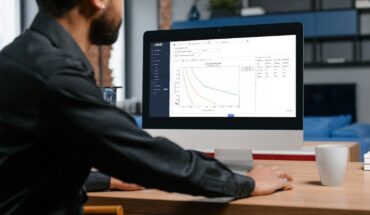
By Parker Aerospace
A better future is a key focus for all manufacturers in the aviation industry, and every manufacturer is working toward that solution in their own way. Austin Major, Group Vice President of Business Development and Global Support at Parker Aerospace, highlights what this approach means in a conversation.
Q. Recently, Parker joined the consortium to advance aviation liquid hydrogen – can you tell us more?
A. Together with Marshall, GKN and Academic Partners, Parker is embarking on the HyFive project, the goal of which is to develop and implement scalable hydrogen fuel propulsion systems for aircraft ranging from small regional to single aisle. This initiative aligns with our commitment to next-generation technologies and our sustainability strategy.
The consortium focuses on five areas related to supporting hydrogen-electric propulsion and hydrogen combustion powertrains: filtration, sensing and monitoring, transporting, fuel gauging/indication, and thermal management.
We believe these hydrogen fuel propulsion systems will be critical as our industry works toward net zero emissions and a sustainable future.
Q. How have the last couple of years been for the company? Recently, Parker Hannifin also adjusted its forecast for more profit.
A. We have experienced significant growth and an expanded portfolio with the acquisition of Meggitt. We have a positive outlook on the future of Parker Aerospace in large part due to our innovative technologies, passionate team members who make a difference every day and our comprehensive Win Strategy that guides everything we do.
Parker is in a leading position in the global Motion and control industry. Across Parker Hannifin, we offer a broad portfolio of interconnected technologies that allow us to offer the best solutions to our customers.
Q. How has the progress been on Alice since its first flight? What is the status of the project from Parker’s perspective?
A. The first flight of Eviation’s Alice all-electric commuter aircraft in September of 2022 began a new era in aviation. We are proud to be a partner in this incredible achievement.
Eviation continues to make progress, as demonstrated by the completion of a formal Conceptual Design Review with wind tunnel testing in April. We are working with them closely on state-of-the-art technology for Alice by developing technologies for the future that will help bring more people together across the world in an accessible, responsible way.
Q. A lot of the focus in the commercial aerospace sphere is on electric and sustainable options today. What is Parker doing in that sphere?
A. Electrification is anticipated to be a key component of the expansion of the aviation industry. Not only is this important for our environmental responsibility, but it will reduce the cost of flight and allow for more regional and local opportunities.
We are proud to be part of this future. Parker currently has the biggest and broadest portfolio of electric technologies, and we offer other solutions like lighter weight technologies that enable more sustainable aircraft. Parker has extensive hydrogen solutions, and we have developed an extreme temperature range sealing solution that is compatible with traditional fuel and SAFs – these innovations, and a number of other green technologies, demonstrate our commitment to supporting our customers as they work toward their sustainability goals.
Q. How do Parker products contribute towards a safer environment?
A. Safety, unparalleled reliability, and zero defects are embedded in everything we do, and they are at the core of Parker’s operational philosophy. But our focus extends beyond quality and includes advanced safety systems.
At the show this year, we will be showcasing some of these technologies. This includes Verdagent, the first non-halon fire suppression agent developed and qualified in the world. We are also sharing our e-brake technology, a proprietary system that eliminates hydraulics from braking systems and is a safe, smart solution for the future. We also have a solution that addresses sealing for SAF, which can be used in a number of ways – including aircraft, engines and airports looking to develop ways to reduce their carbon footprint.
Responding to the call for decarbonizing aviation, fuel providers are blending SAF with conventional jet fuel in ever-increasing amounts. As the composition of current and future SAF formulations may vary significantly, compatibility of all types of SAF with some traditional seal materials is a concern.
Q. What are the key product innovations that Parker has done in recent years?
A. We are proud to offer a broader, deeper and more interconnected portfolio than we ever have in the past, and we can do this because of our focus on innovation and the combination of Parker Aerospace and Parker Meggitt.
In addition to the products I already mentioned, we are excited to share more exceptional advancements we have made at Parker. This includes an impressive suite of solutions that help solve challenges with thermal management systems and are complete, cost-effective and efficient.
We have CoolTherm technology that helps prevent overheating and improves reliability and performance for electric vehicles, including aircraft. We also have our smart fan technology on display. These smart fans are made using no permanent magnets meaning they are cost and energy efficient. Smart controls seen on the fans can also be applied to pumps and other components. Our passionate people with deep engineering expertise, together with our breadth of differentiated technologies, ensure that we make the extraordinary happen and continue to shape the future of aviation in partnership with our customers.





